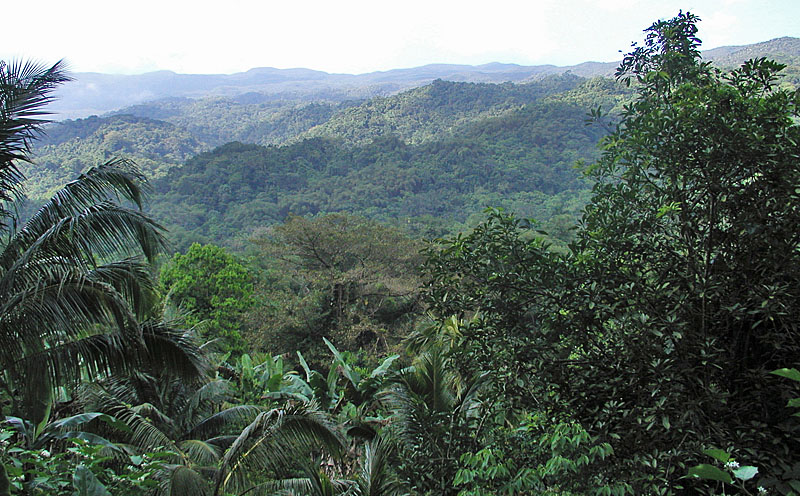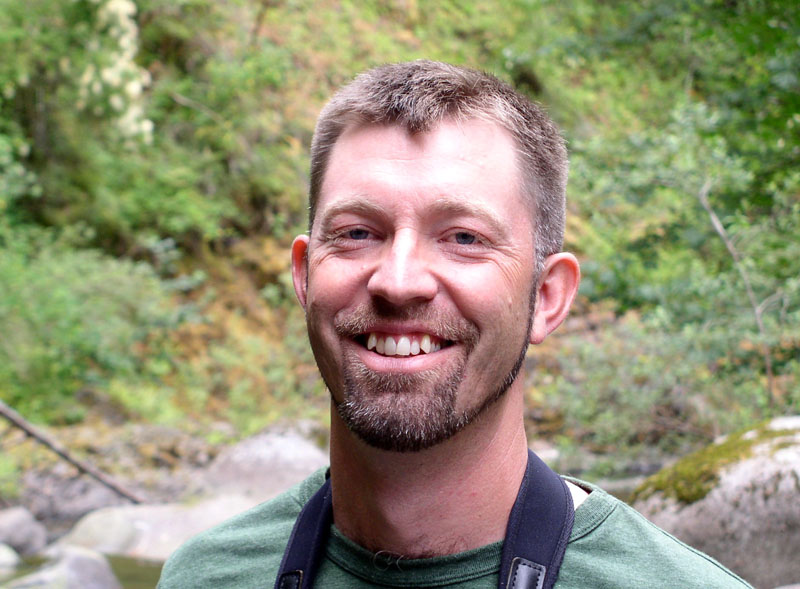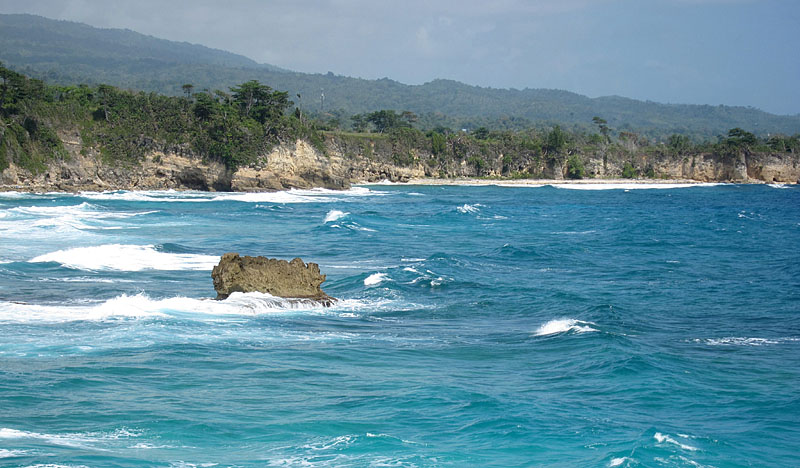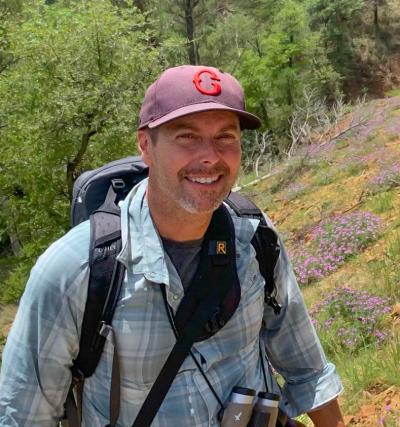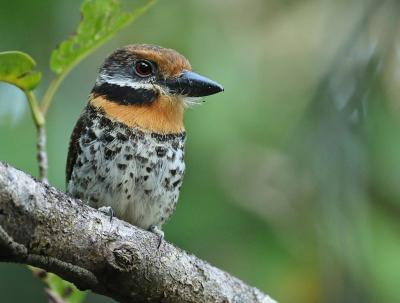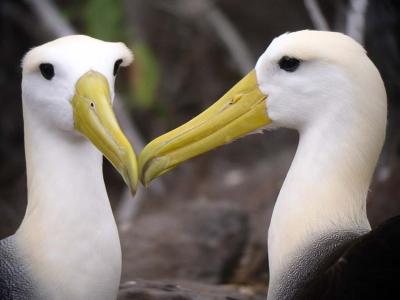Jamaica
-
Apr 12-20, 2025
Rich Hoyer
Tour Price to be Determined
Tour Price to be Determined
With at least 27 endemic bird species as well as a host of Antillean and neotropical specialties, Jamaica offers some of the most exciting birdwatching in the West Indies. It is the only one of the Greater Antillean islands where one has a very good chance of seeing every endemic in less than a week.
A treasured part of our short tour is the opportunity to stay at delightful Marshall’s Pen, the 200-year-old working ranch, nature reserve, and home of biologist and conservationist Ann Sutton, who recently coauthored A Photographic Guide to the Birds of Jamaica. In these idyllic surroundings, we expect to see many of the island’s endemic birds as well as abundant butterflies, anole lizards, and treefrogs. We’ll also visit the desert-like southern peninsula and spend three full days exploring the more lush and mountainous eastern end of the island, with ample opportunity not only to see every endemic species, but to get to know most of them well through multiple observations at a relaxed pace.
Delicious local foods (such as ackee, callaloo, bammy, and the famous jerk recipes) and a look at Jamaica’s fascinating history and culture round out a very special experience.
Day 1: The trip begins this evening at our hotel in Montego Bay, Jamaica.
Day 2: The birds right around our hotel might include the endemic subspecies of Vervain Hummingbird and Bananaquit and the introduced Saffron Finch, but more exciting birding awaits us, so after breakfast we’ll work our way eastward along the northern coast, making stops before lunch to check roadside ponds and mangroves for migrants and resident water birds, among which may be Clapper Rail and “Golden” Yellow Warbler. All along the roadsides we’ll see the endemic subspecies of Loggerhead Kingbird, as well as any Gray Kingbirds that may have just recently arrived from their South American wintering grounds.
The Red-billed form (or species) of the Streamertail is on our first night’s hotel grounds, but as we work our way eastward to our lodging in Port Antonio we enter the range of the decidedly different Black-billed Streamertail. These and Jamaican Mango visit the feeders at our hotel, while White-chinned Thrush, Jamaican Euphonia, Jamaican Spindalis, and Jamaican Woodpecker could be active when we arrive. Weather permitting, we’ll also make an attempt for Jamaican Owl on our hotel grounds. Night in San San.
Day 3: Today we’ll bird at a slow pace along Ecclesdown Road in the Drivers River Valley. At the base of the John Crow Mountains, this is the wettest forest on the island—and the single most endemic-rich spot in the entire Caribbean. We’ll concentrate our search images on the difficult Crested Quail-Dove and the scarce Jamaican Blackbird above all else, though the birding, in general, is great fun. Crested Quail-Doves may be found walking on the roads at dawn (and sometimes later in the day as well), and their haunting songs should be heard from the dense woods, a sound that has earned them the local name “mountain witch.” The blackbird, in its own genus Nesopsar, doesn’t appear to be closely related to any other blackbird. Pairs sing short duets, males perform display flights in the canopy, and they search bromeliad and vine tangles more like a foliage-gleaner than any icterid. The blackbirds require mature wet forest, a habitat much reduced in Jamaica, and this is one of the best places for them. Blue Mountain Vireo is also found here, sometimes appearing quietly and unexpectedly only a few feet away. The cheeky Rufous-tailed Flycatcher, noisy Jamaican Woodpecker, and delightful Jamaican Tody are more examples of the fabulous birds we should see here. By lunchtime, we’re likely to have well over half of the island’s endemics under our belt. Night in San San.
Day 4: We’ll have this morning to return to the Ecclesdown Road with a stop to look for White-tailed Tropicbirds. After lunch, we’ll make the drive into the Port Royal Mountains to our hotel, perched on a mountain slope overlooking coffee fields at the junction with the Blue Mountains. Night in Silver Hill Gap.
Day 5: We’ll spend all morning high in the Port Royal Mountains, where as much as 100 inches of rain a year supports luxurious and fascinating vegetation—highland trees such as the Blue Mahoe and a heavy growth of mosses, lichens, endemic tree ferns, and bromeliads. The often elusive Crested Quail-Dove and Jamaican Blackbird are also possible here, and this will likely be our only chance at the lovely Rufous-throated Solitaire, an endemic subspecies that should probably be considered specifically distinct from the Hispaniolan and Lesser Antillean forms. We may also see Greater Antillean Elaenia, and Arrowhead Warbler seems to be most common in these mountains. Orangequits can be quite abundant in this area, and Chestnut-bellied Cuckoo, the “old man bird,” is often on our hotel grounds. After lunch in the mountains, we’ll work our way to our home for the next three nights, Marshall’s Pen on the outskirts of Mandeville.
Days 6-7: We’ll spend at least one full morning at Marshall’s Pen, where the birding experience starts even before we rise, with the glorious song of the endemic White-eyed Thrush. We will have likely seen all but one or two of the endemics by now, but maybe it will be this morning when we finally have our best views of the scarcer ones, such as White-eyed Thrush or Jamaican Lizard-Cuckoo.
On one day we’ll depart just after lunch for the radically different habitats of Portland Ridge. Here the arid acacia scrub resembles eastern Africa more than it does other parts of the island; it is home to the endemic subspecies of Bahama Mockingbird, while Vervain Hummingbird and Stolid Flycatcher are especially common here. Searching for waterbirds in the mangrove lagoons and for northern migrants in the surrounding scrub will add to the day’s interest.
On another day we’ll rise early and drive into the Cockpit Country, home to several birds not always easily seen elsewhere on the island. We’ll arrive in time to see the mist lift from the “egg-box” hills that give the area its name, and more importantly, to view the early morning flights of Yellow-billed and Black-billed Parrots; with luck, we’ll also see them perched. The rugged karst formations here have been an effective deterrent to forest clearing, making the Cockpit Country some of the most pristine habitat in Jamaica, full of endemic plants, butterflies, and other creatures. We’ll look especially for Plain Pigeon, Rufous-tailed Flycatcher, and Jamaican Crow. We’ll return to Marshall’s Pen in mid-afternoon.
One of the best parts of the day at Marshall’s Pen is the evening meal on the verandah, the table full of delicious Jamaican food and the diners surrounded by the sounds of the Jamaican night: the voices of Jamaican Owl, Northern Potoo, and myriad amphibians. Nights at Marshall’s Pen.
Day 8: We’ll conclude with our return to Montego Bay, stopping at several birding hotspots to scan ponds, lakes, and marshes for additional species. If we’re lucky, we might see Yellow-breasted Crake, Spotted Rail, West Indian Whistling-Duck, Masked Duck, or perhaps an American Crocodile waiting expectantly under a heron roost. Night in Montego Bay.
Day 9: The tour concludes this morning in Montego Bay.
Note: The information presented below has been extracted from our formal General Information for this tour. It covers topics we feel potential registrants may wish to consider before booking space. The complete General Information for this tour will be sent to all tour registrants and of course supplemental information, if needed, is available from the WINGS office.
ENTERING JAMAICA: All visitors must have a passport valid on the day of entry and with at least one blank page. Citizens of the United States, Canada, and the United Kingdom do not need visas; citizens of other countries should check with their nearest Jamaican Embassy or consulate.
If you have been to almost any other tropical country with six weeks, you will have to have a brief health interview after exiting the plane and before getting in line for immigration. A valid Yellow Fever vaccination is required if you are arriving from a country where the disease is a risk, and this is enforced. See https://wwwnc.cdc.gov/travel/yellowbook/2024/infections-diseases/yellow-fever#1948 for more information.
COUNTRY INFORMATION: You can review the U.S. Department of State Country Specific Travel Information here: https://travel.state.gov/content/travel.html and the CIA World Factbook here: https://www.cia.gov/the-world-factbook/. Review foreign travel advice from the UK government here: https://www.gov.uk/foreign-travel-advice and travel advice and advisories from the Government of Canada here: https://travel.gc.ca/travelling/advisories.
INTRODUCTORY MEETING: There will be an introductory meeting at 6:30 p.m. on Day 1 in the lobby of our first night’s hotel. This informal meeting gives the leader the opportunity to introduce everyone to each other and to let you know generally what to expect on the trip—pace of the tour, daily routine, etc. We strongly recommend you arrange your flights to arrive by late afternoon so that you can be present at the introductory meeting. After the meeting, we will have dinner.
PACE OF THE TOUR: Most mornings will start around 5:30 am, often with coffee and optional early birding, followed by a sit-down breakfast at 7:30 or 8:00. There will be a couple earlier mornings, either starting with an early breakfast at around 05:15 am or a picnic breakfast after an early drive. We usually bird through the morning hours after breakfast to lunch. On most days we try to schedule one to two hours of free time after lunch and/or before dinner for rest, but sometimes we’ll use the afternoon to drive to our next hotel, so there are some longer days.
The longest walks are of only about one mile (1.6 km) and do not climb substantially. Most walking is on level roads, although at Marshall’s Pen there is some very uneven, rocky ground, and a 1/4-mile trail at Green Castle Estate one afternoon is steep in places. Those with balance and stability issues should bring a collapsible hiking stick with a wrist loop, and those who find it difficult to stand for long periods may wish to bring a small travel stool. On several evenings we might go owling within a short walk of our doorstep. There are several longish drives on typically rough, even if paved, Jamaican roads.
HEALTH: The Centers for Disease Control and Prevention (CDC) recommends that all travelers be up to date on routine vaccinations. These include measles-mumps-rubella (MMR) vaccine, diphtheria-tetanus-pertussis vaccine, varicella (chickenpox) vaccine, polio vaccine, and your yearly flu shot.
They further recommend that most travelers have protection against Hepatitis A and Typhoid.
There is no malaria or yellow fever in Jamaica. The most current information about travelers’ health recommendations can be found on the CDC’s Travel Health website here: https://wwwnc.cdc.gov/travel/destinations/list
Elevation: Our highest elevation will be 3500 feet (1070 m).
Insects and Arachnids: Though chiggers are absent or rare, minute ticks can be a nuisance in a couple places, but they carry no diseases. Imported red fire ants are around but easily avoided by not standing in a nest for any length of time. Mosquitoes can be numerous in some years. There is mosquito control on the grounds of our hotel in Montego Bay, but in the evenings one should wear repellent. Otherwise, we do not stay near human settlements where there is a risk of mosquito-borne diseases. To be protected, bring plenty of spray repellent and wear long sleeves and pants when in the field.
Smoking: Smoking is prohibited in the vehicles or when the group is gathered for meals, checklists, etc. If you are sharing a room with a nonsmoker, please do not smoke in the room. If you smoke in the field, do so well away and downwind from the group. If any location where the group is gathered has a stricter policy than the WINGS policy, that stricter policy will prevail.
Miscellaneous: There are no venomous snakes on Jamaica. One can never completely escape the risk of parasites or fungal infections. Please consult with your physician. We avoid tap water but filtered and bottled water are readily available.
CLIMATE: The days are generally quite warm and humid, and summer clothes are suitable year-round. But be prepared for rather cool, damp weather in the Blue Mountains (with lows possible into the mid-50’s F), and slightly cool mornings at Marshall’s Pen (morning lows usually in the upper-60’s F). Rain is very unpredictable, with an occasional downpour possible, or even a totally dry week without a single drop.
ACCOMMODATIONS: Our hotels and lodges are always among the best available, comfortable and modern, and all have rooms with private baths, hot water, and electricity at all locations. Marshall’s Pen, a delightful bit of a departure, is a 200-year-old private “great house” with ten guest bedrooms with private baths, some en suite, others just across the hall.
INTERNET ACCESS: Wi-Fi is available at all of our lodges, at least in the communal/dining area.
FOOD: Jamaica is famous for its delicious local foods, such as ackee (known also as “vegetable scrambled eggs”), callaloo (a vegetable cooked as spinach), bammy (fried or steamed cakes made from cassava), and the famous jerk recipes. The food at Marshall’s Pen and Starlight Chalet is home-cooked and served family style, while on other nights we eat at standard restaurants.
We have one or two picnic breakfasts and one or two picnic lunches. The remaining meals are had at our lodging, with one lunch at a roadside “jerk centre,” one at a guest house en route, and one at a fast-food restaurant in Kingston.
Drinks: Bottled water and/or a soft drink or a beer is provided at lunch and dinner, as is coffee or tea. All other drinks or ‘personal’ drinking water for use in your room etc. is the responsibility of the individual; our lodges typically have filtered water available for refilling your own bottles. We also keep bottled water on the bus for ‘emergency’ use during the day.
Food Allergies / Requirements: We cannot guarantee that all food allergies can be accommodated at every destination. Participants with significant food allergies or special dietary requirements should bring appropriate foods with them for those times when their needs cannot be met. Announced meal times are always approximate depending on how the day unfolds. Participants who need to eat according to a fixed schedule should bring supplemental food. Please contact the WINGS office if you have any questions.
TRANSPORTATION: Transportation during the tour is in minibuses driven by the leaders. Some roads may be quite bumpy and/or winding; anyone susceptible to motion sickness should bring an appropriate remedy. Participants should be able to sit in any seat in our vehicles.
The map below shows our tour itinerary and major destinations.
2020 Narrative
In Brief: We ended our Jamaica tour a day early this year, with worries that the reduced number of flights back to the US might make returning home more difficult. It turned out we would have had at least most of our regular flights home anyway, but this year’s itinerary was a day longer than in recent years, and we didn’t miss much more than a chance at some fun open country, marsh, and mudflat birding. Once again, all of the island’s amazing endemics made it to the official tour list, though Crested Quail-Dove was much less cooperative than in the past – we all heard the skulkers, but only one or two participants saw it well. But we had repeated views of everything else, saw some of the rarer endemic subspecies, and delighted in absorbing ourselves in the amazing world of island endemism amongst the lizards, butterflies, snails, and plants.
In Detail: On our first birding walk just down the street from our hotel was very pleasant. Zenaida Doves were feeding in the parking lot alongside Common Ground-Doves and White-winged Doves. White-crowned Pigeon showed well in the trees, and a bird we assumed had to be Eurasian Collared-Dove turned out to be Ringed Turtle-Dove (the domesticated form of African Collared-Dove), as evidenced by its distinctive purring song. Jamaican Euphonia was the one endemic species we saw, but the strangely short-tailed Greater Antillean Grackles (an endemic subspecies) were also fun to see. Some of the group also managed to spot a Vervain Hummingbird in the non-native plantings. A Yellow-throated Warbler was a nice surprise (a first for this tour’s cumulative list), and a Yellow “Golden” Warbler at the end of the road was cooperative. The sewage ponds were good for padding the list with widespread water birds, after which we made our way eastwards to our hotel for the next two nights with a stop at Miss T’s for lunch. Black-billed Streamertails greeted us upon arrival at Goblin Hill, while after dinner the Jamaican Owls were vocal but not interested in showing themselves.
We had a fabulous morning along Ecclesdown Road, one of the most endemic-dense roads on any island in the world. Highlights for our small group were Jamaican Woodpecker, Greater Antillean Bullfinch, Jamaican Spindalis, Arrowhead Warbler, Jamaican Tody, Black-billed Streamertail, and Jamaican Mango, the latter two most easily seen at the feeders at the hotel, where we leisurely spent much of the afternoon. Some of us took an easy outing to Point Folly, seeing a few migrant warblers around the ruins as well as Royal Terns over the Caribbean Sea. We also witnessed how Jamaicans were taking very seriously the threat of the Coronavirus even with fewer than 10 cases on the island, as our hands were sprayed with alcohol upon entering the grocery store. This evening we had better success with the owls, though only three of the group were present when one bird sat right out in the open.
Yellow-shouldered Grassquit was the prize bird on our morning walk near our hotel, and for the mid-morning outing, we had instant success with several White-tailed Tropicbirds immediately upon arrival at Hectors River. We made another pass on the Ecclesdown Road, where we got very close to Crested Quail-Dove with only a brief chance to see one if you were watching the right place at the right time. We had fantastic looks at Chestnut-bellied Cuckoos before it was time to go to our scheduled lunch for a traditional jerk meal in the town of Boston, where it is said to have originated. We arrived at our Silver Hill Gap hotel with plenty of time to enjoy the multitudes of Red-billed Streamertails visiting the feeders.
The only new bird we had in the Port Royal Mountains was Rufous-throated Solitaire, and even if we didn’t see one super well, we were treated to one of the most evocative songs in the country. Some saw Yellow-shouldered Grassquit even better than the day before, and everyone had their best views ever of Jamaican Spindalis when one flew in and landed in a bush right in front of us. Everyone knew to stand still, and it didn’t fear us as it began to feed on flower buds. Orangequit, Red-billed Streamertail, Jamaican Oriole, and Jamaican Woodpecker made it to the list of particularly memorable sightings today, as did a Lynx Spider feasting on an endemic Calisto zangis satyr. Lunch was at the Devon House (takeout only!), followed by their famous ice cream, and we were amazed at the closely swooping Antillean Palm Swifts in the courtyard.
We had a wonderful full morning at Marshall’s Pen. Even before breakfast, we located a pair of Jamaican Elaenias, which probably for the first time ever became the final and 27th endemic species for the tour list (we usually get it on the first or second day). We worked a bit harder to find the rare Greater Antillean Elaenia, but the views we had were incredible, as the bird came closer and closer (even without further playback). We were lucky this year that a Northern Potoo had been staked out for us, possibly on a nest, as it had been there for a few days and was still there when we left. In the afternoon we went to the southern tip of the island and were almost immediately rewarded with two Bahama Mockingbirds (we weren’t sure it was a pair or a singing adult with an older dependent in tow). Stolid Flycatcher also showed well, as did a pair of Clapper Rails that eventually came out of hiding to walk around amongst the red mangrove rhizophores. We worked up a big mob of wintering warblers of several species, and a nice surprise here was a Prothonotary Warbler, another addition to the 16-year-old master list.
What would turn out to be our final morning of birding in Jamaica started with an early morning drive into the center of the island to reach the fabled Cockpit Country. With almost every plant and critter an endemic species, we had a great morning. Both species of parrots were seen perched, and we were extremely lucky to spot a very rare Plain Pigeon as it flew across the “pit” and landed in a tree on the distant ridge. We were able to see the pale eye, the red in the wings, and then clinched it when its song reverberated against the limestone hills. The most entertaining bird of the day was a Jamaican Mango that set up a late morning territory at a blooming Agave sobolifera, chasing away any bird that might dare take some of the abundant nectar from the richly golden flowers. Jamaican Todies were also in evidence as we perused the fascinating vegetation (Moses-in-the-cradle was one plant that grabbed out attention), looked at lovely spiders, and noted a few lepidopterans, including a very cooperative Hammock Skipper on the foliage and a Jamaican Crescent in the road. Back at Marshall’s Pen, some of us finally got good views of Caribbean Dove, while the family of Least Grebes in the catchment basins chattered away.
With the news that Jamaica would be closing the airports to incoming foreigners at midnight, we weren’t so certain that our flights home would still exist the next day, so instead of what would have been a fun morning of birding in marshes, ponds, and mudflats, we made our way directly to Montego Bay. Soon after arrival all of us were confirmed on flights home a day early. All’s well that ends well. When we arrived on the island, there was one confirmed case, and as I write this three weeks later, the total has come to merely 47 on this island of about 3 million inhabitants. We can only hope they can manage to keep the spread controlled.
This tour is limited to six participants with one leader and 12 with two leaders.



